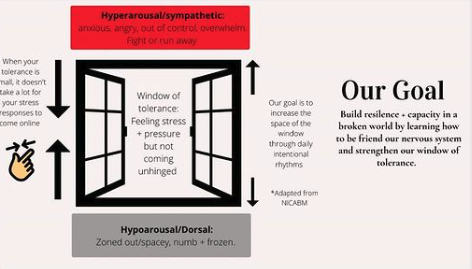Broken Heart Syndrome
Broken heart syndrome. Is it real or just the stuff made of movies and click-bait headlines?
I worked on a cardiac step-down unit, and was shocked the first time I heard about broken heart syndrome. This syndrome is real, and it’s an incredible example of why tuning into our mind-body-spirit connection and our capacity for stress is so essential.
Broken heart syndrome often happens when a person experiences a tragic loss of a loved one. Unlike arterial blockages, broken heart syndrome can come on quickly and present without blockages.
This syndrome is also known as Takotsubo Cardiomyopathy, and was initially described in Japanese articles in 1990 (PMID: 3214344). It is most common in post-menopausal women, and is said to be caused by high stress hormones. Essentially, the heart is stunned by severe emotional or physiological stressors. Hence how this syndrome got its more popular name, broken heart syndrome.
When it comes to this experience, severe emotional stressors can vary widely and often include:
grief (accident or death of a loved one)
receiving unexpected bad news (serious diagnoses, etc.)
extreme fear (armed robbery, public speaking, etc.)
change in residence
anger (fight with a partner)
relationship discord (break up or divorce)
financial troubles (layoffs, demotion)
being bullied and more
Early stress effects from childhood have also been found to lead to increased amygdala (part of the brain that’s crucial to the body’s stress response) activity. This increased activity may not manifest in the body until adulthood, which is especially interesting to note since this syndrome is most common in post-menopausal women (PMID: 17290802).
Ahmed Tawakol, a Massachusetts General Hospital cardiologist and associate professor of medicine at Harvard Medical School, led a 2021 study that probed the depths of broken heart syndrome. His research used a massive database of PET/CT images. The images were not of the heart but of the brain. This allowed researchers to track the tole that stress plays in this syndrome.
The team reviewed scans of patients who later developed broken heart syndrome and compared them with patients who had similar scans but did not develop the condition. What they found was that those who developed the syndrome had elevated amygdala activity. They also found that the higher the activity, the sooner heart symptoms occurred. Those with high amygdala activity experienced the condition within a year. Moderate amygdala activity was linked to symptoms three years later.
Increased inflammation, blood pressure and heart rate have also been linked to heightened activity in the amygdala.
In his conclusions, Dr. Tawakol noted, “We shouldn’t seek to eliminate those responses because people need them during stressful life events, not to mention emergences. The key is that the stress response be counterbalanced by the regulatory effects of the prefrontal cortex.”
What does that mean? We shouldn’t focus on getting rid of how the amygdala responds to high-stress events. We should instead focus on how we regulate our minds and bodies following stressful events. That’s where the prefrontal cortex comes in, as it’s where we process our surroundings, compare that to past experiences, and then react to them.
Do you know what helps regulate amygdala and prefrontal cortex activity? Nervous system regulation.
The goal of nervous system regulation is not to eliminate stress or to never react in certain situations. The goal is to develop the mental and physical capacity and resilience to handle stressors without chronic overwhelm. It also helps us to know how to regulate when we do experience overwhelm. An effective way to do this is to probe into our God-designed nervous system and understand our unique window of tolerance:
I believe broken heart syndrome shows how important it is to take seriously our emotional and physiological stressors. Both have powerful impacts on our God-designed bodies.
Could nervous system regulation be a key piece we are missing when it comes to prevention of a host of ailments and diseases? I believe so.
Want to learn more about how to regulate your nervous system and better care for your health? Check out our Aligned and Renewed membership! We discuss science-backed studies and resources, so you can learn how your body functions and be equipped take your health into your own hands.

